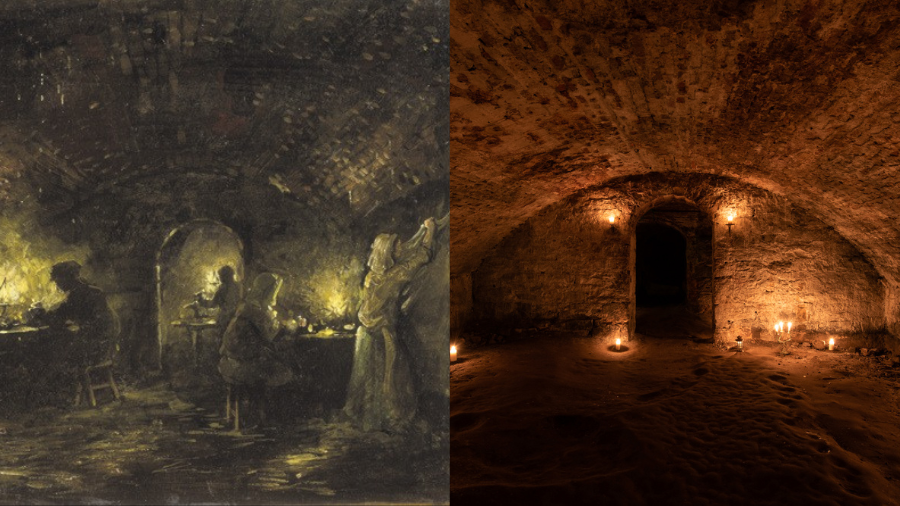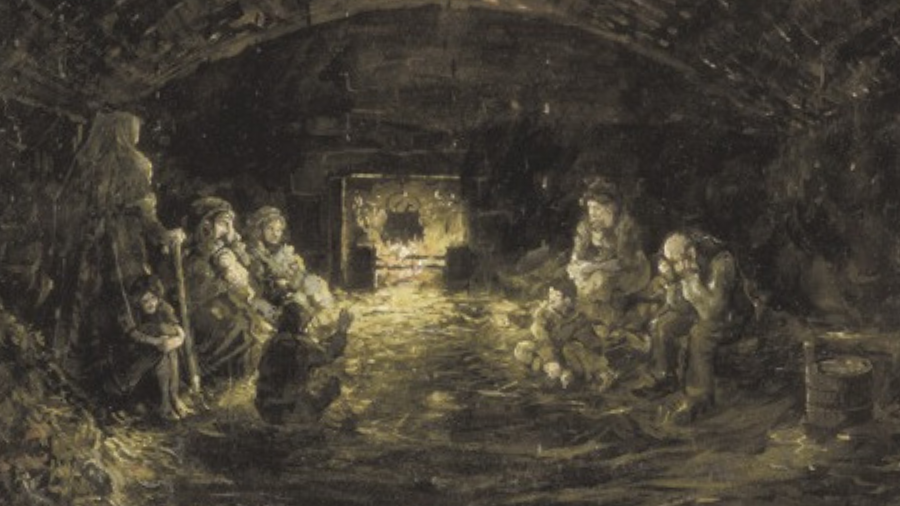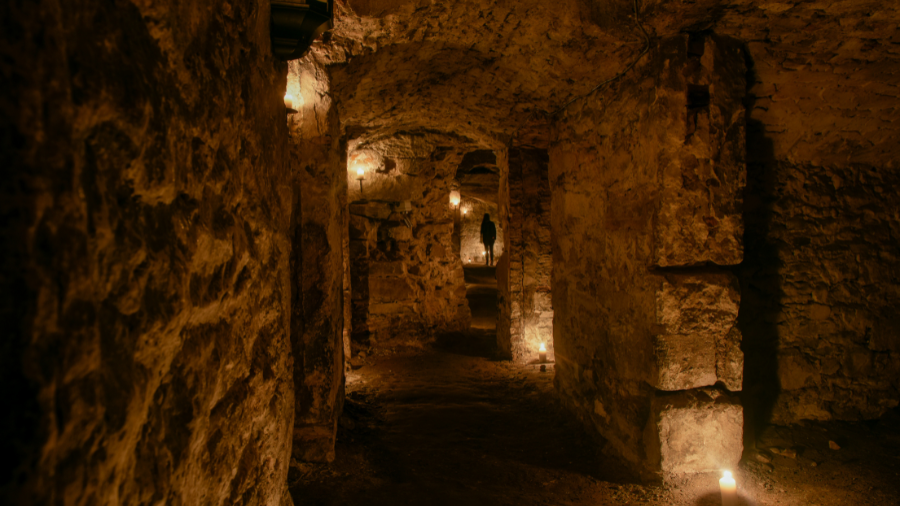Did people live in the Edinburgh underground vaults?
29th Aug 2024Descend into the secrets of the city’s past on an Edinburgh history tour of the Blair Street Underground Vaults.
Edinburgh’s underground vaults
Below the South Bridge in Edinburgh’s Old Town is a subterranean network of chambers called the Edinburgh South Bridge Vaults. The Blair Street Underground Vaults, the deepest and most extensive section you can visit today, are part of these.
South Bridge was built in the 1780s as a thoroughfare that became Edinburgh’s high-end commercial district of the late 18th century. The vaults are situated within its cavernous arches.

In their early years, these vaults served as the workshops and storage spaces for the businesses operating on the South Bridge.
Street directories indicate that leatherworkers, jewellers, haberdashers and many more used these vaults as spaces of both work and storage.
They became an underground extension of everyday life in Edinburgh.

A population forced underground
Across the British Isles, industrialization was driving artisan workers out of their generational professions and into the cities to find more certain work in the factories.
In Edinburgh, waves of Irish and Highland migrants — forced off their land by famine and clearances — arrived to seek solace. Even as the population increased, the city’s capacity to house them diminished.
As a result, transient populations made a home out of the vaults. These were labouring families with young children, the parents doing anything to keep their children warm and safe from the unforgiving Scottish elements.

They could not prepare for the conditions within Edinburgh’s underground vaults: from the heinous crimes that lurked round every corner to diseases like Cholera, Typhoid, Tuberculosis and Rickets.
Less than a century after their creation, the vaults were sealed as part of the Acts of Improvement (1867-71). Slum clearance ensued as closes were systematically widened into streets and dilapidated tenements were razed to the ground.
The rubble from these efforts was used to fill up and seal off the vaults forever, displacing the thousands of people who may have lived and worked down there.
Where did these people go?
The Acts of Improvement destroyed far more than they created.
At this time, vagrancy was considered a crime. The city authority destroyed people’s homes and then prosecuted them for homelessness. It remains one of the Edinburgh underground vaults’ great archival mysteries as to where its missing people went.
We do know that, often, the most common punishment for vagrancy was deportation.
This period of British history saw an emphasis on the rising status of Britain’s white-settlement world, a series of satellite states founded on British migration. With this migration came politics, culture and demography.
British migration to imperial destinations was increased through state-assisted passage and forcible migration. It was one way to ease the burden on the rapidly overpopulating cities like Edinburgh.
If we look at Edinburgh’s lost, we do find them abroad. Many names, clans and professions from the Edinburgh vaults reappear in imperial destinations such as Canada, Australia, New Zealand and South Africa.
Want to see Edinburgh’s darkest secrets for yourself? Descend into the Blair Street Underground Vaults on an Edinburgh history tour and uncover their dark past.


